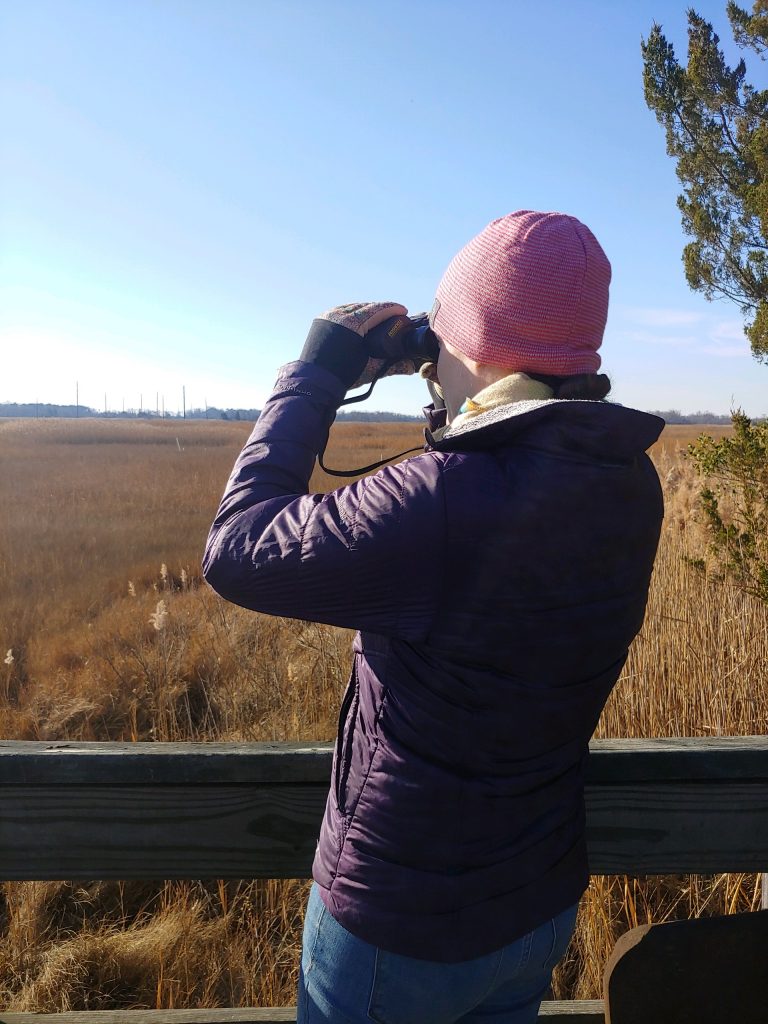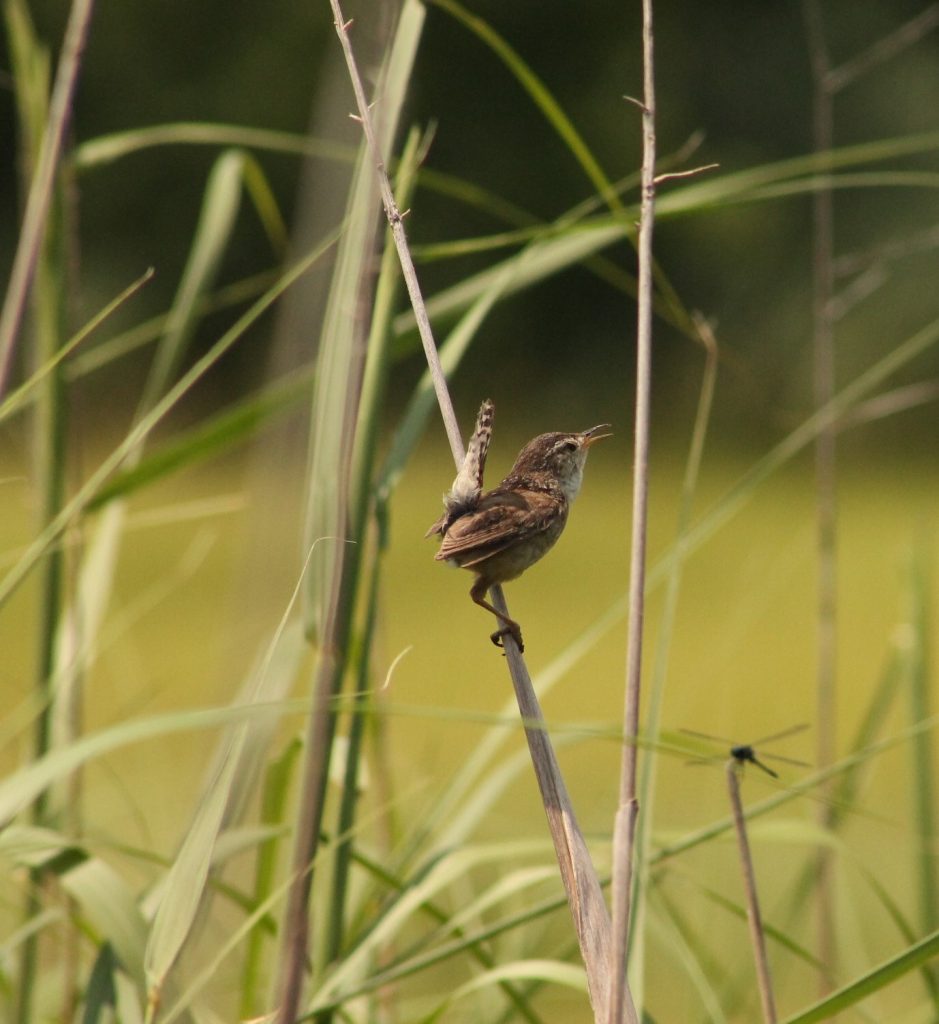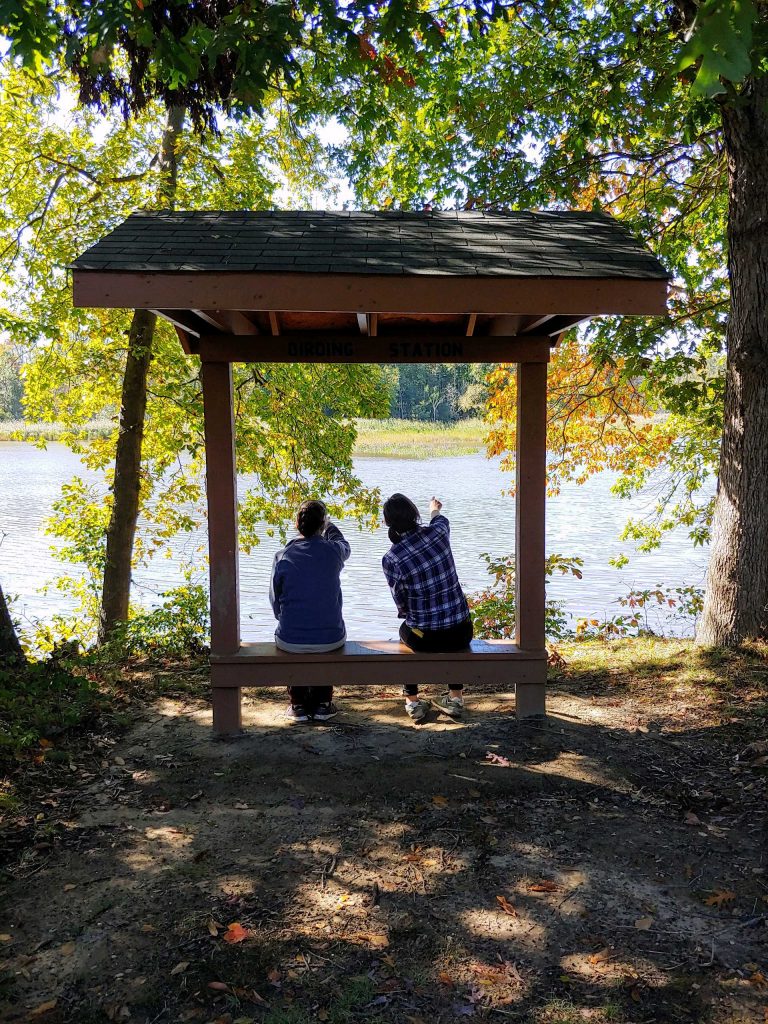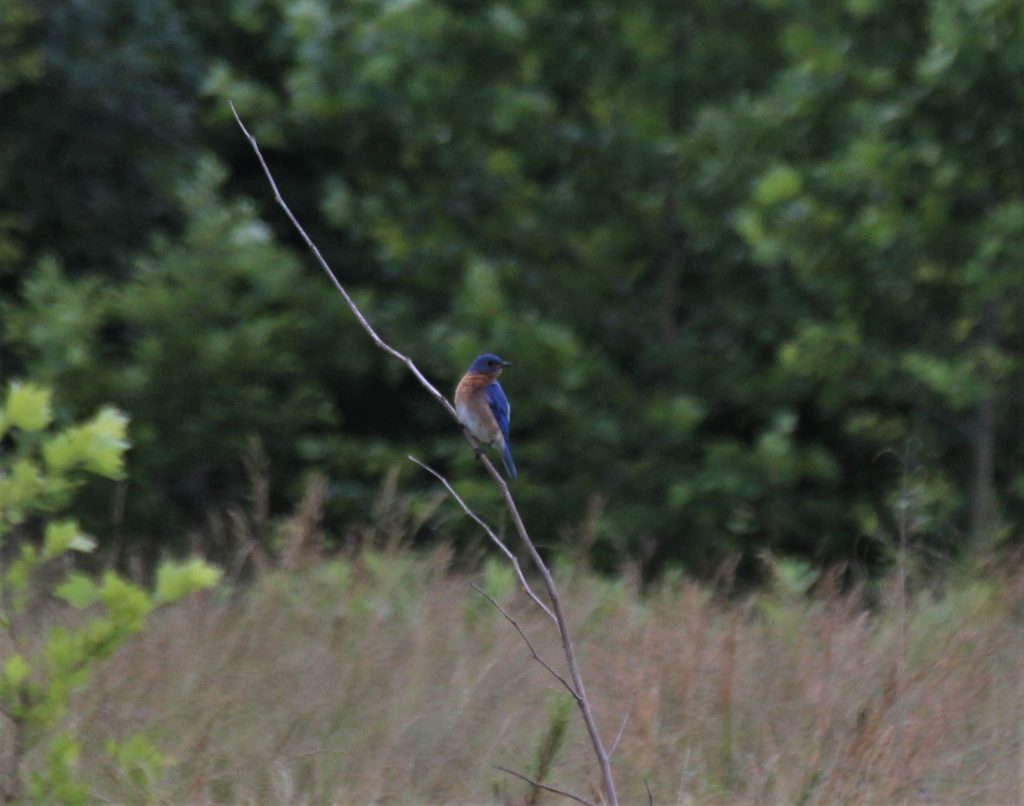By Laurel Sullivan and Amanda Austin

Calling all birders, experienced and newbies – the Delaware National Estuarine Research Reserve has a Big Year challenge for you!
A Big Year is a personal goal or informal competition taken on by birders to see and identify as many species and individual birds as possible within a given year and geographic area. The Delaware National Estuarine Research Reserve, or DNERR, part of the Delaware Department of Natural Resources and Environmental Control, opens its own Big Year challenge in 2022 at our two locations, the Blackbird Creek Reserve and the St. Jones Reserve. Documenting the species of birds that visit the reserves’ locations will allow us to collect data on common and rare species while also increasing awareness about these estuary ecosystems.
The DNERR’s locations have dynamic habitats that offer many resources for a variety of bird species. The Blackbird Creek Reserve in Townsend is a freshwater marsh with meadows, and many native tree species that have been planted as part of our conservation and stewardship efforts. The St. Jones Reserve in Dover is a salt marsh offering a preserved land area for many marsh birds.

These two locations, with their differing habitats, resources and bird populations, will allow variety in the recorded sightings, helping our Big Year flourish. Both reserve components have walking trails available for birders to use while they are participating in our Big Year. The Blackbird Creek Reserve even has specified bird watching stations for visitors to make use of as you look for birds that may be wading in the Blackbird Creek.
Each of the habitats at DNERR’s locations has many residential species, which are birds that are commonly seen year-round. Some of these include the American robin, the great blue heron and the bald eagle. However, the habitats also offer unique resources as the seasons change, attracting migratory bird species as well. DNERR has some commonly seen migrating birds, such as the red knot, dark-eyed junco, and Canada goose.
By continually engaging with the public and the birding community, DNERR is hoping to capture the seasonal shifts of bird populations. We are also excited to document any rare species that may be sighted throughout the year. The information collected during the Big Year will help to inform DNERR’s restoration plans, land stewardship and conservation efforts.

Research is our middle name at DNERR and that’s where you come in. Our Big Year could not be possible without the help of everyone who visits the reserves’ locations. Participation in the Big Year is relatively easy; you do not have to be an experienced birder to get involved and become a citizen scientist – all you need is your smartphone. DNERR will be using two apps, iNaturalist and eBird, to capture and record the data. iNaturalist allows participants to upload individual sightings with pictures or audio. These sightings can then be verified and confirmed by other citizen scientists and reserve staff through the app. This makes iNaturalist a great option for beginning birders. The eBird app, commonly used by more experienced birders, provides an opportunity for users to populate a personal list of birds. Birders can use the DNERR reserves’ hotspots to see recent sightings from other users as well.
Throughout 2022, the DNERR education team will be hosting programs centered on birds for experienced and new birders alike. These free programs will include guided hikes, birding ID workshops, sessions on how to use iNaturalist, youth and family programs, and much more.
While each birding adventure will be unique and your own, we ask that you follow the Big Year challenge rules which are based on the American Birding Association guidelines:

We want all birding participants to remain safe, so please follow these safety guidelines:
Volunteers must register to participate. Find more information about DNERR’s Big Year and how to become an official DNERR Big Year Birder.
We at DNERR are very excited about our Big Year and the data that we will use for years to come to enhance our species inventory. We hope that this challenge inspires many new and experienced birders to explore the estuary. Grab your camera and become a Big Year Birder with DNERR today.
Laurel Sullivan is the education coordinator in the DNREC Delaware National Estuarine Research Reserve
Amanda Austin is the assistant education coordinator in the DNREC Delaware National Estuarine Research Reserve